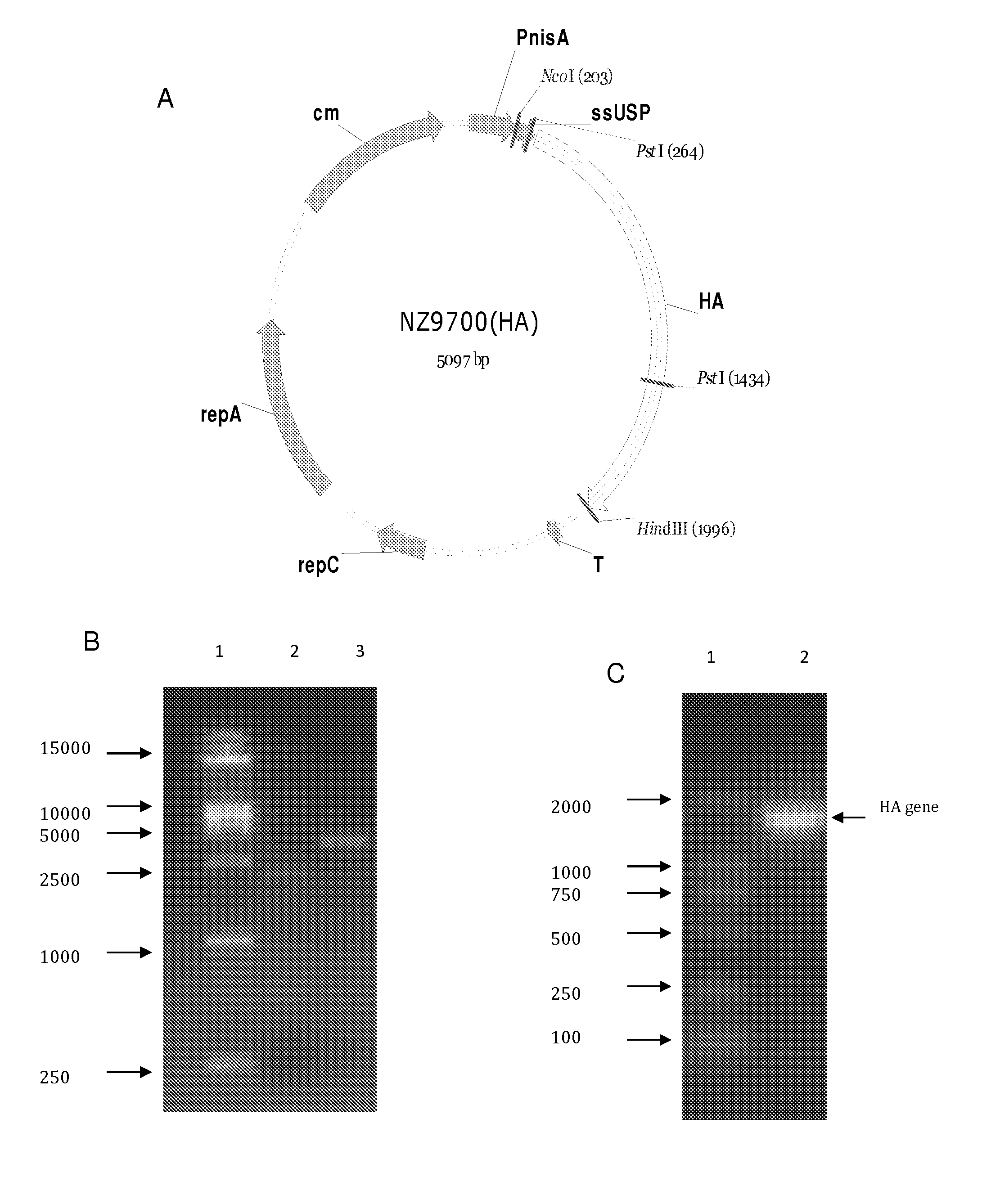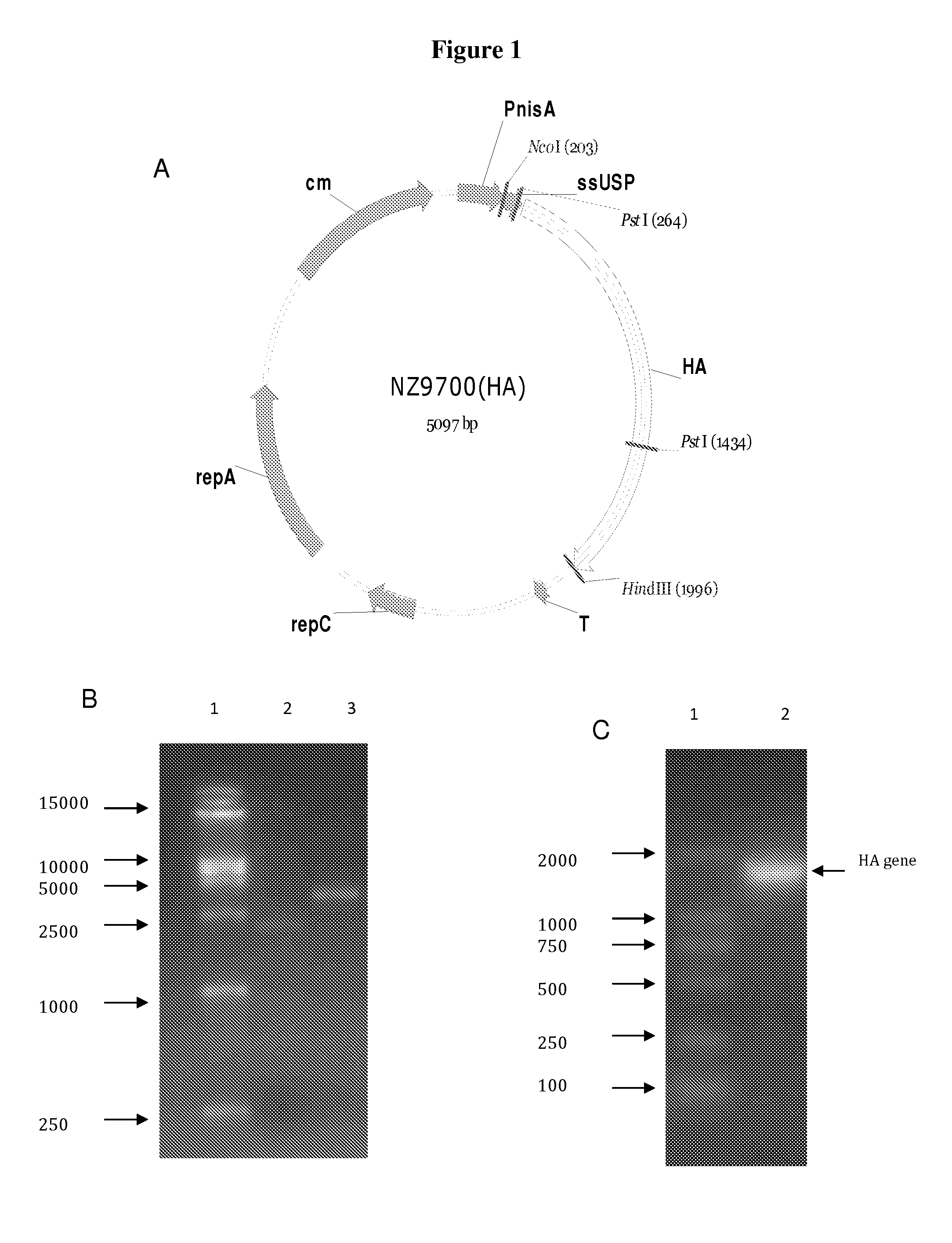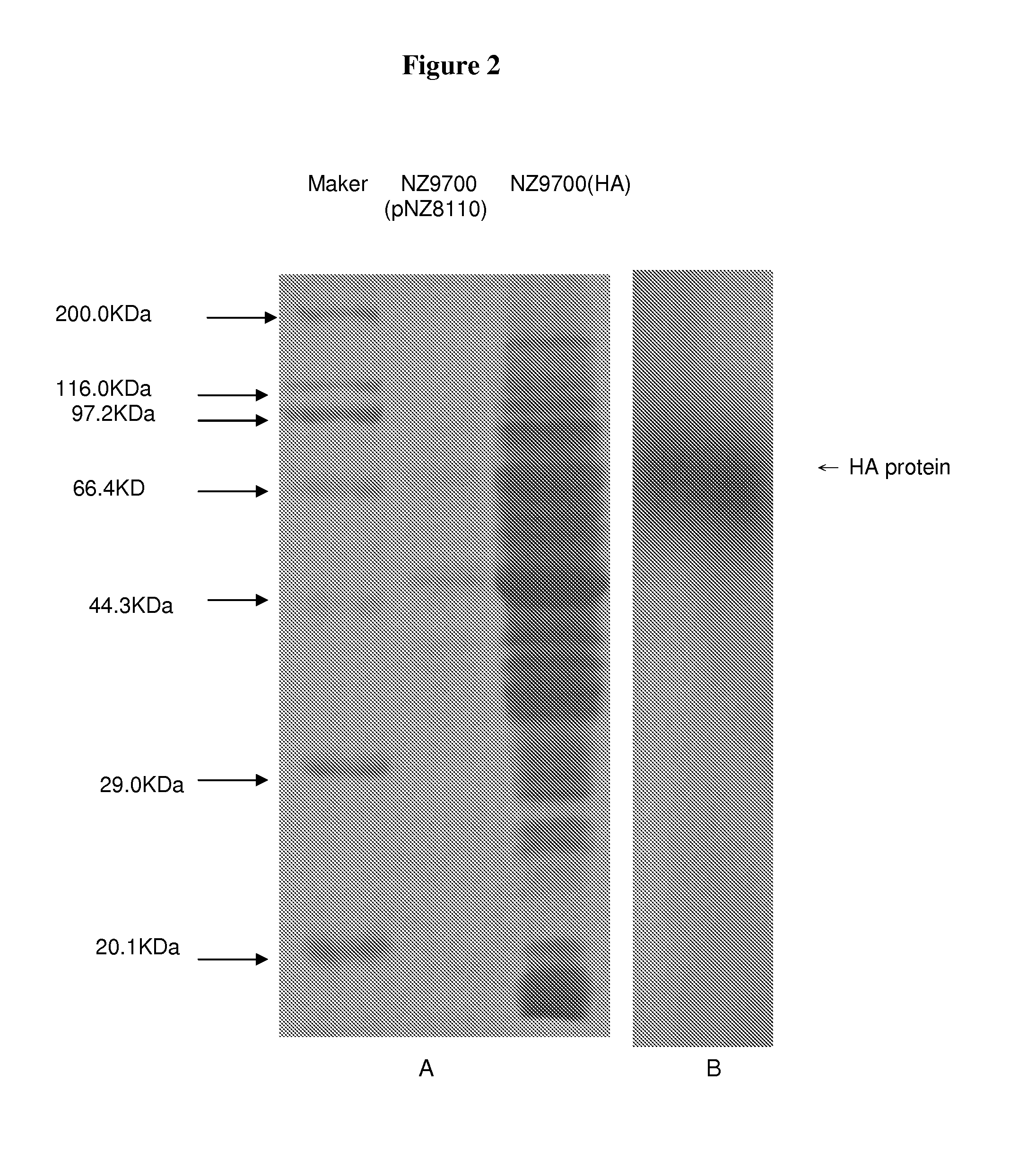Oral vaccines produced and administered using edible micro-organism
a technology of oral vaccines and edible microorganisms, applied in the field of vaccines, can solve the problems of drastic commercial impact, reduced proportions, food shortages, etc., and achieve the effect of strong ha-specific humoral and mucosal immune responses
- Summary
- Abstract
- Description
- Claims
- Application Information
AI Technical Summary
Benefits of technology
Problems solved by technology
Method used
Image
Examples
example 1
Materials and Methods
[0278]In the present invention, a recombinant L. lactis vector encoding the hemagglutinin (HA) gene of avian influenza virus H5N1 was constructed. The live vectors were encapsulated inside alginate microcapsules or enteric coating capsules to protect them from acid destruction and maintain antigen expression for an extended time period. Mice that were immunized orally mounted an effective immune response against H5N1 virus.
Plasmid Constructs and Transformation
[0279]A 1704 by fragment containing the HA gene from pGEM-HA (kindly supplied by Prof. Ze Chen, Wuhan, China) was amplified by polymerase chain reaction(PCR) using the following primer pairs with Nael or HindIII sites underlined (5′-tctgccggcgagaaaatagtgcttctt-3′, 5′-cccaagctttaaatgcaaattctgcattgtaacg-3′. The PCR product was sequenced. The resulting NaeI / HindIII fragment was cloned into various vectors including L. lactis-pHA (HA protein expressed in cytoplasm), L. lactis-pSHA(HA proteins secreted), and L. ...
example 2
Agrobacterium-Mediated Transformation of A. thalianai Using Floral-Dip Method
[0301]A. Plant Culture[0302]1. Clip the primary inflorescences when most plants have formed primary bolts (about 3-4 weeks after planting the germinated seeds in soil).[0303]2. Dip the plants when most secondary inflorescenes are I-10 cm tall (2-4 days after clipping)[0304]3. Cover the plants dipped in Agrobacterium solution with the black plastic package to maintain humidity and leave them in a low-light or dark location overnight.[0305]4. Remove dome and return plants to the growth chamber 12 to 24 hr after inoculation.[0306]5. Dip the inflorescenes again after 6-7 days if it is needed. The inflorescenes can be dipped 3 times with 6 days between each application.[0307]6. Allow plants to grow for a further 3-5 weeks until siliques are brown and dry.[0308]7. Harvest seeds by gentle pulling of grouped inflorescences through fingers over a piece of clean paper,[0309]8. Store seeds in microfuge tubes and kept ...
example 3
Demonstration of DNA Constructs in Animal Models
[0330]BALB / c mice (male) of 7 to 8 weeks of age were provided by the Laboratory Animal Unit of The University of Hong Kong. The mice were kept and fed by the animal technicians in the animal house of Department of Zoology, The University of Hong Kong.
A. Design of Animal Inoculations
[0331]35 BALB / c mice were randomly divided into 7 groups, each group consisted of 5 mice. The approach was separately replicated in twice (demonstration 1 and demonstration 2).
[0332]Details of the embodiment of the invention are shown in Table 3:
TABLE 3Details of demonstration setupGroup #TreatmentIBD vaccineGroup 1Injected with 100 g pcDNA3.1-VP5-5.2 &VP2-3, 4 intramuscularly.IBD vaccineGroup 2Fed with E. coli cells containing 100 gpcDNA3.1-VP5-5.2 & VP2-3.4.HC vaccineGroup 3Injected with 100 g pHCV2.5intramuscularly.HC vaccineGroup 4Fed with E. coli cells containing 100 gpHCV2.5.PRRS vaccineGroup 5Injected with 100 g pcDNA3.1-ORF5intramuscularly.HC-PRRS co...
PUM
| Property | Measurement | Unit |
|---|---|---|
| temperatures | aaaaa | aaaaa |
| buoyant density | aaaaa | aaaaa |
| buoyant density | aaaaa | aaaaa |
Abstract
Description
Claims
Application Information
 Login to View More
Login to View More - R&D
- Intellectual Property
- Life Sciences
- Materials
- Tech Scout
- Unparalleled Data Quality
- Higher Quality Content
- 60% Fewer Hallucinations
Browse by: Latest US Patents, China's latest patents, Technical Efficacy Thesaurus, Application Domain, Technology Topic, Popular Technical Reports.
© 2025 PatSnap. All rights reserved.Legal|Privacy policy|Modern Slavery Act Transparency Statement|Sitemap|About US| Contact US: help@patsnap.com



